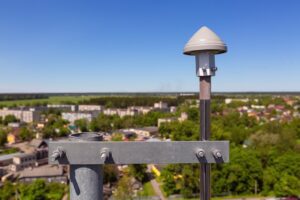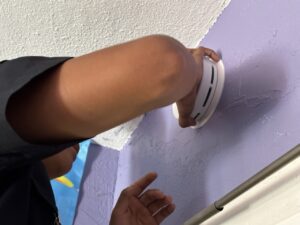Last week I started the discussion on disaster preparedness and college students. I showed through history that college campuses have their fair share of disasters. Most campuses have science buildings, chemistry labs as well as storage of hazardous materials. Having an understanding of when to leave or when to stay (shelter in place) could be just the tool a student needs to survive. Here are some suggestions that could greatly reduce the impact a disaster has on your young scholar.
Have a GO Bag. – A GO bag is a pre-packed backpack/duffle/tote that contains the essential items to survive a minimal of 72 hours. (Clothes, food, water, medication, money, tool, protection, first aid kit, radio, flashlight, whistle and what ever else that individual may need)
Know the number to campus security/escorts – Burning the midnight oil, working, studying and visiting friends across campus causes students to relax their personal security. NEVER walk in the dark alone. Most campuses offer some type of escort service or ride system to reduce the potential for campus attacks and assaults.
Register your email/Smart Phone – One of the lessons learned from the Virginia Tech. tragedy was the better use of early warning systems by way of technology. Most campuses have a warning registry where students can register their email address and cell phone numbers to receive emails and text messages if there is a threat.
Learn about your new area and what types of events have occurred before-My daughter goes to school in Arizona. Here are the “red flags” for the Phoenix area that I have read about: Flash floods, droughts and wild land fires. I learned that by typing in “Environmental and natural hazards of Phoenix Arizona” in my computer search engine…simple. As well, the school was more then happy to share with me how to help my daughter prepare for the Arizona environment. I made sure that she has plenty of water…2 cases of bottled water in her dorm room. (Water is like gold, especially after any disaster), we learned the location of her emergency exits of her dorm and the safe gathering area, Have a plan to reconnect…use what ever tools are available. Cell phone, text, Skype, Facebook and Twitter are just a few tools available. Having knowledge of social media and active/open accounts may allow you and your student to reconnect quicker and that speeds up the recovery process.
Scan important documents to USB drive-having your student’s important documents scanned and saved to a USB drive or to an on line host/cloud can help with the recovery process. Items such as Drivers License, Student ID, transcripts, financial aid records, birth certificate, visa/passport, Soc. Sec information, Bank and Credit Union information can be a major headache if destroyed. Having a digital copy in your cloud will be a huge help.
Know the “Apps”-There’s an app. For just about anything. Here are four suggested apps that I have that you may want to download if you have a smart phone/iPad/tablet: 1.) Life360-This is an app to help you use GPS to locate family members. After Hurricane Katrina, many people could not find loved ones for weeks. 2.) American Red Cross/First Aid-I love this app. Quick and useful. 3.) FEMA-This is another great tool to have at your finger tips. 4.) Flashlight-This app. Turns my iPhone into an emergency flashlight…how cool is that?
Consider a First Aid or EMT elective – Maybe your student needs to fill a general education requirement or wants to pick up a few extra units. Consider taking a health/first aid class or a premed EMT class. The information they learn just might save your life. They just might find a career path.
The most important thing is to have the conversation and have a plan with your student. To fail to plan is to plan to fail. Our students are in institutions to stimulate their thinking and expand their knowledge…we must do our part to support them in this process and one of the best ways to do that is to help them be prepared. In life, not all tests will be given in a classroom.








